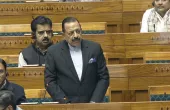Is net metering the right way forward for PV rooftops in Asia?
By Agostinho Miguel GarciaNet metering started by being a very sexy idea in regards to the development of rooftops. Maybe very similar to the infamous feed-in tariffs (FiT). And as with FiT, it ignored one of the most important ingredients in any business: scale and competition.
Whilst FiT failed almost everywhere to be updated and rationalised even leading to procurement processes designed to discover the FiT, it also provided the benefit that almost anywhere in a country with a FiT, all places were viable for the production of RE.
Rooftops suffered part of the same drama. They had to be viable to encourage and entice the owners and also for companies to lease their roofs and make money out of it. The idea was to open up the market and let rooftops grow.
Then the rise in rooftops led to problems in the grid and saturation of generation without demand as the rooftop owners were not consuming the power that they generated. The situation eventually became so bad that only generation for self consumption was allowed. Thus can be summarised as:
a) Installed PV capacity limited by the contracted capacity,
b) Installed PV capacity limited by the real consumption,
c) Installed PV capacity restricted to auto-consumption.
The last option has somehow killed the market and the reasons are interesting to be enumerated:
- sun shines weekdays and weekends
- sun shines on working days and on holidays
- sun shines on lunch breaks
- sun shines on good and bad economic times
The size of a rooftop for self or auto consumption becomes much smaller and actually much more difficult to determine than if the grid was the sink and the meter the money-making machine. A PPA under the former circumstances is much more tricky, and banks, which are risk-averse, will not lend to those projects.
What is left then? Clearly: supermarkets, shopping centres, massive manufacturing facilities, any place than runs the whole day for every day of the year. And the rest? Just some PV fans that take the extra mile and change their patterns to fit into the PV generation and – yes, you are right – those that have batteries in their systems as well.
So, Asia is betting on net metering to enable PV rooftops to grow and we are around phase a) now. A good example is India. To avoid the same story, which will lead to c) and to the selection of few consumers reducing the market, Asia must see the broader picture. I will pause here to let the readers know that I am not criticizing situation c), I am just saying that it is a much smaller market than the initially envisaged and actually expected.
The way forward is a net metering, but with time of use tariffs (TOU). This is a fundamental shift in the generation costs and also on the demand side, the consumer. We cannot have completely different generation costs being paid by the consumer at the same price, making storage and more flexible power as hydro, biomass, gas, geothermal being compared to either fixed (so-called base load) or intermittent (solar and wind) power. That is impossible to result in a fair deal for any of the parties.
The idea that fixed costs were meant to pay for infrastructure and variable costs for fuel and energy generated is long gone, as you know well if you live in countries that have huge deficits in electricity sales by utilities, late decision by regulators that must cater to political and social issues. These countries are not only developing countries, but many of the so-called developed countries.
To actually solve this issue, TOU must be introduced and, yes, we must stop doing everything in the evening from watching TV to washing the dishes, washing our clothes, playing games, etc. We must shift some of our electrical consumptions to the peaks of solar – noon – and wind – mid-afternoon to evening.
We must use our smart devices to actually tell us when to get our appliances to work, save money, and then our rooftops can all be connected to the grid and the prices will be adequate, storage will matter, and the RE landscape will radically change on rooftops and instead of b) and c) we will have the right option: prosumer!
A message to the Asian decision-makers: break the rules again, do it differently, leapfrog conventional rooftop concepts, and innovate by changing your energy markets and enabling a true energy revolution. Enact dynamic TOU tariffs based on the generation mix and be bold.




















 Advertise
Advertise






